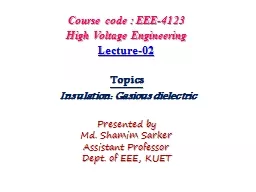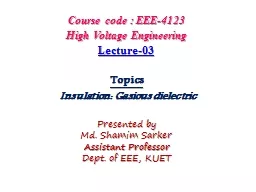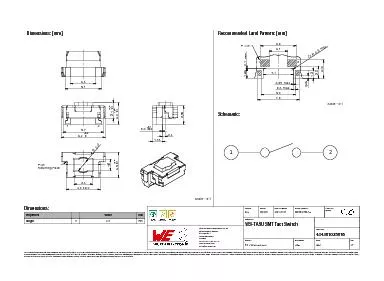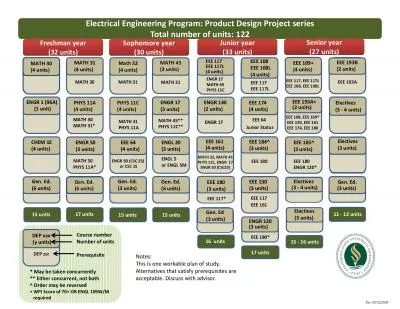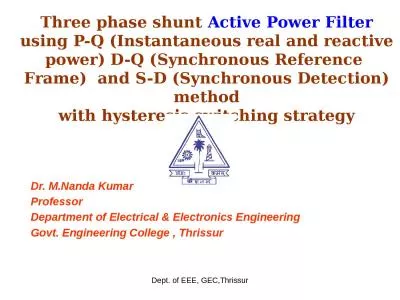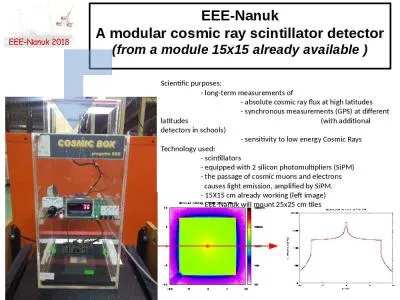PPT-Course code : EEE-4123 High Voltage Engineering
Author : olivia-moreira | Published Date : 2018-03-12
Lecture02 Topics Insulation Gasious dielectric Presented by Md Shamim Sarker Assistant Professor Dept of EEE KUET Objectives In this course you will learn
Presentation Embed Code
Download Presentation
Download Presentation The PPT/PDF document "Course code : EEE-4123 High Voltage Engi..." is the property of its rightful owner. Permission is granted to download and print the materials on this website for personal, non-commercial use only, and to display it on your personal computer provided you do not modify the materials and that you retain all copyright notices contained in the materials. By downloading content from our website, you accept the terms of this agreement.
Course code : EEE-4123 High Voltage Engineering: Transcript
Download Rules Of Document
"Course code : EEE-4123 High Voltage Engineering"The content belongs to its owner. You may download and print it for personal use, without modification, and keep all copyright notices. By downloading, you agree to these terms.
Related Documents

